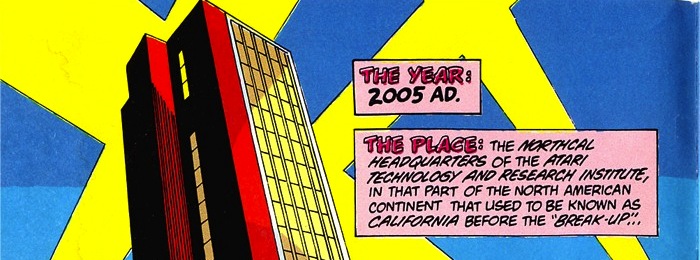
Game Boy pocketIt's not unknown for Nintendo to dwell perhaps overly on the aesthetic variations on their basic and simple hardware. Henry Ford boasted of the Model T "Any customer can have a car painted any colour that he wants so long as it is black." but Nintendo has always been happy to reward its loyalists with the ability to coordinate their devices with their overall decor. Admittedly, offerings from rivals Sony, Microsoft and even Sega have often looked like they would only really be fully appropriate as part of the on-board entertainment systems on one of Disaster Area's sundiving stunt ships.Now in six tasty colours
"That," he said, "that ... is really bad for the eyes ..." Ford looked. He too stood astonished. It was a ship of classic, simple design, like a flattened salmon, twenty yards long, very clean, very sleek. There was just one remarkable thing about it. "It's so ... black!" said Ford Prefect, "you can hardly make out its shape ... light just seems to fall into it!" Zaphod said nothing. He had simply fallen in love. The blackness of it was so extreme that it was almost impossible to tell how close you were standing to it. "Your eyes just slide off it ..." said Ford in wonder. It was an emotional moment. He bit his lip.And so forth -- don't get me starting Hitchhiker's Guide quotes: I won't stop. (But in deference to the recently-passed Towel Day, I may as well pass along the link for the new, 30th-anniversary implementation of the HHGTTG text adventure game, now in HTML5!)
But back to the matter at hand, I guess what they're getting at with this ad is that Game Boy pockets are cool and fun in a similar way to the cool fun of drinking Slurpees from the local 7-11, which are likely to stain your tongue some heinous neon tint after freezing your brain. It's a dense little unexplicated reference: anyone who needs to know will appreciate it subconsciously.
The evocation of the 1980 D&D monster the Gibbering Mouther by this "wall of tongues" effect is probably unintentional.
Anyhow, my Game Boy-related excuse for making this post here today is because this morning at shift change a co-worker invited me to tarry a moment; having previously overheard me talking up my fabulous video game party, which wasn't really her cup of tea, she revealed that she still had her childhood Game Boy (because anything not explicitly thrown out is retained) and would be happy to give it a good home under my custody. With the video game party behind me, I'd pretty much forgotten the exchange, but apparently she hadn't -- I was delighted this morning to be endowed with a working GB and its two killer apps, Super Mario Land and Tetris -- arguably the best video game ever made, shortly to be celebrating the 30th anniversary of its creation in the USSR... maybe I will learn the rest of its theme music in honor of the occasion.
I previously owned a defunct Game Boy but got to enjoy a fine selection of its carts harnessing the power of the Super Game Boy adaptor, which duplicates the hardware contents of a Game Boy in cartridge form, parasitically hijacking the Super Nintendo's joystick input and video/sound output. So I'm looking forward to playing Game Boy Tetris with the adaptor, on a big screen, in colour, with block-rocking beats.
Thanks, Anne-Marie! I'll try to take a better selfie next time. She claimed it had just been sitting in a drawer for 20 years, which is sadly very likely, but I was thrilled to flip the switch and observe the power light going on. Typically in such cases the batteries would eventually corrode and explode, leaking battery acid everywhere, rendering the insides of the machine messy if not outright destroyed -- seemingly the fate of my Game Gear (though I have a lead suggesting that cleaning with vinegar can reverse some of the alkaline "battery acid"'s effects. Happily not so in this case!




